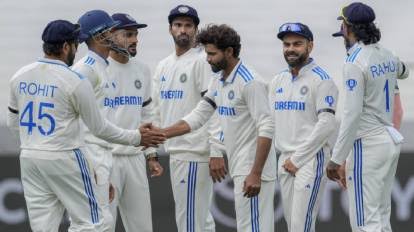A Transition Without Direction
India’s Test cricket transition is hitting turbulent waters, and much of it stems from a lack of foresight. This predicament has been building for years, much like the transitions of 2011-12 and the late 1990s. Despite ample warning signs, there seems to have been little preparation for this inevitable phase.

The sudden retirement of R. Ashwin and rumors of internal discontent echo the chaotic days when Indian cricket was mired in scandals. Compounding the problem is the underperformance of senior players and a vision that has been compromised by the demanding ICC events calendar.
Learning from Past Transitions
In previous transitions, players like Rahul Dravid, VVS Laxman, and Harbhajan Singh passed the baton to well-prepared successors such as Virat Kohli, Cheteshwar Pujara, and R. Ashwin. Sachin Tendulkar’s steady presence provided stability. But the current phase lacks a clear blueprint, with stalwarts like Rohit Sharma and Virat Kohli grappling with form and relevance.
The increasing focus on white-ball cricket has also created a pool of aggressive batters who often struggle with the patience and technique required for Test cricket.
Concerns Among the Batters
Shubman Gill, who showed early promise in white-ball formats, is now struggling to establish himself in Test cricket. Rishabh Pant’s unconventional approach has also come under scrutiny. Among the younger generation, Yashasvi Jaiswal has shown promise in Tests, but his absence in ODIs raises questions about long-term planning.
The Spin Conundrum
Ashwin’s departure leaves a significant void. Washington Sundar, while talented, is more of a batter than a bowler at this stage. Ravindra Jadeja’s eventual retirement could leave India vulnerable, especially at home. Kuldeep Yadav has the skills but struggles with fitness, while Axar Patel seems to have fallen out of favor. Emerging all-rounders like Nitish Kumar Reddy show promise but need consistent opportunities to develop in red-ball cricket.
Fast Bowling Challenges
India’s fast-bowling unit, once a major strength, is now facing challenges. Jasprit Bumrah’s workload limits his availability, and Mohammed Shami’s fitness issues have raised concerns about his management. While Mohammad Siraj has shown potential, his growth has not met expectations. Prasidh Krishna and Harshit Rana lack sufficient exposure, and the exclusion of Arshdeep Singh from red-ball plans remains puzzling.
The Leadership Dilemma
India’s captaincy future looks uncertain. While Bumrah has shown leadership potential, his fitness issues make him an unreliable long-term option. KL Rahul is the next logical choice, but his inconsistent career trajectory and frequent role changes have left him battling personal challenges.
A Clouded Future
India’s transition is marked by too many unanswered questions and a lack of viable options. With key players nearing the end of their careers and no clear succession plan in place, the team’s future in Test cricket seems uncertain. To navigate this phase successfully, the focus must shift from short-term fixes to long-term planning that nurtures talent and ensures a seamless transition.


